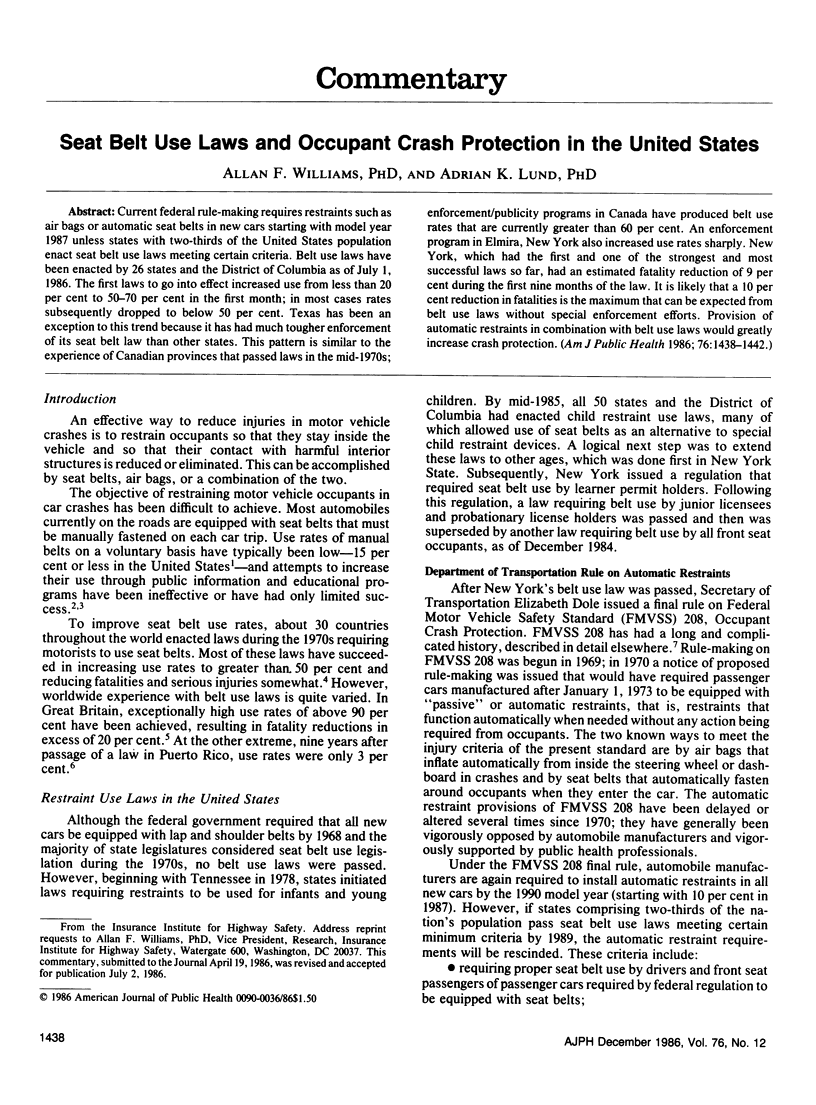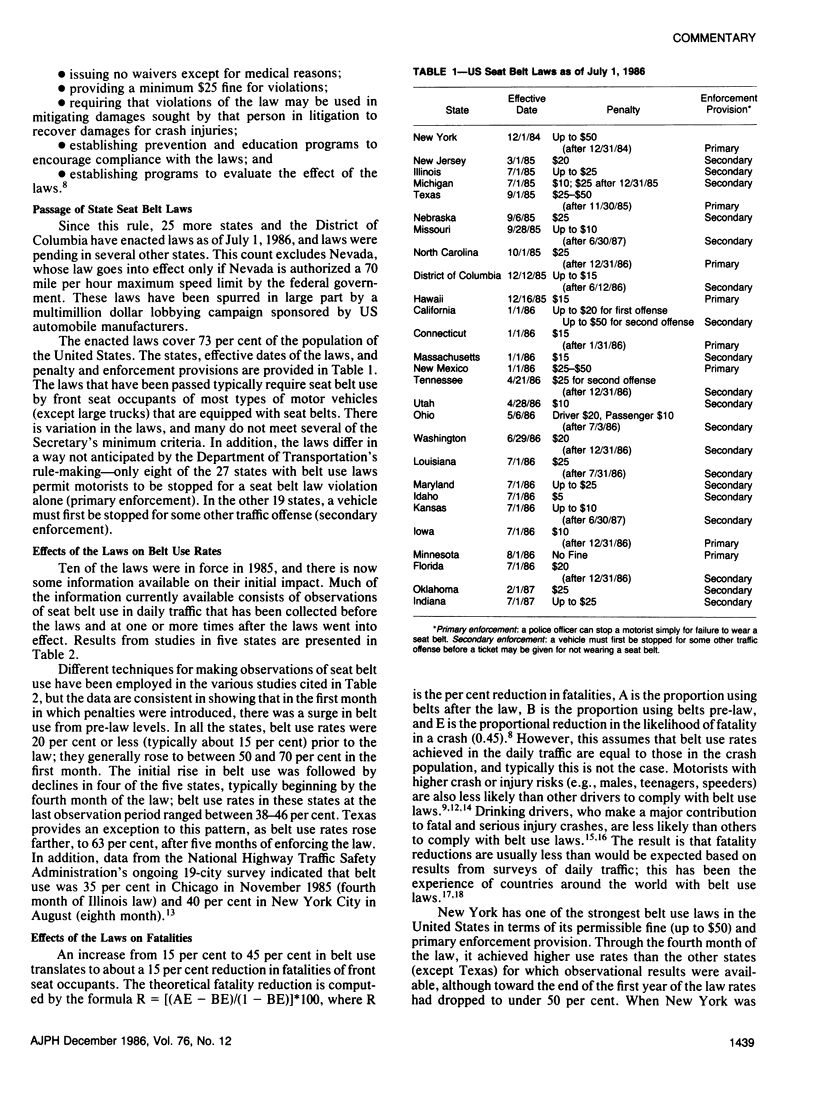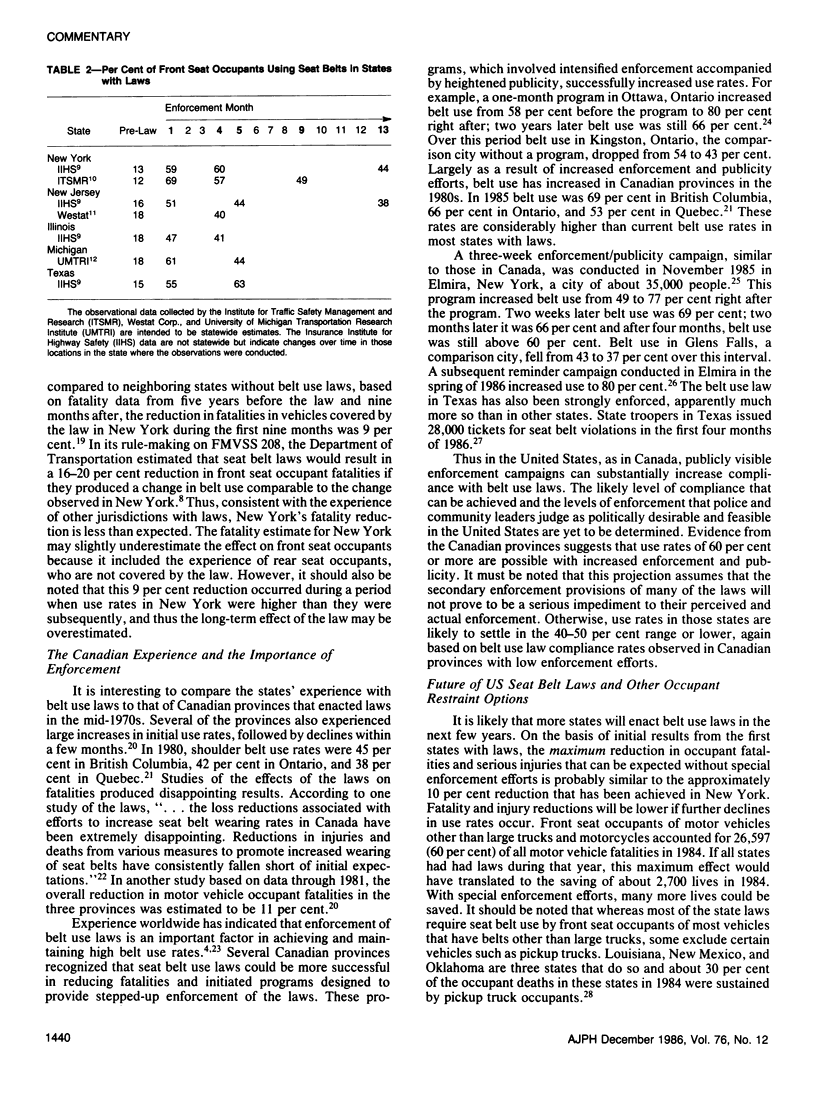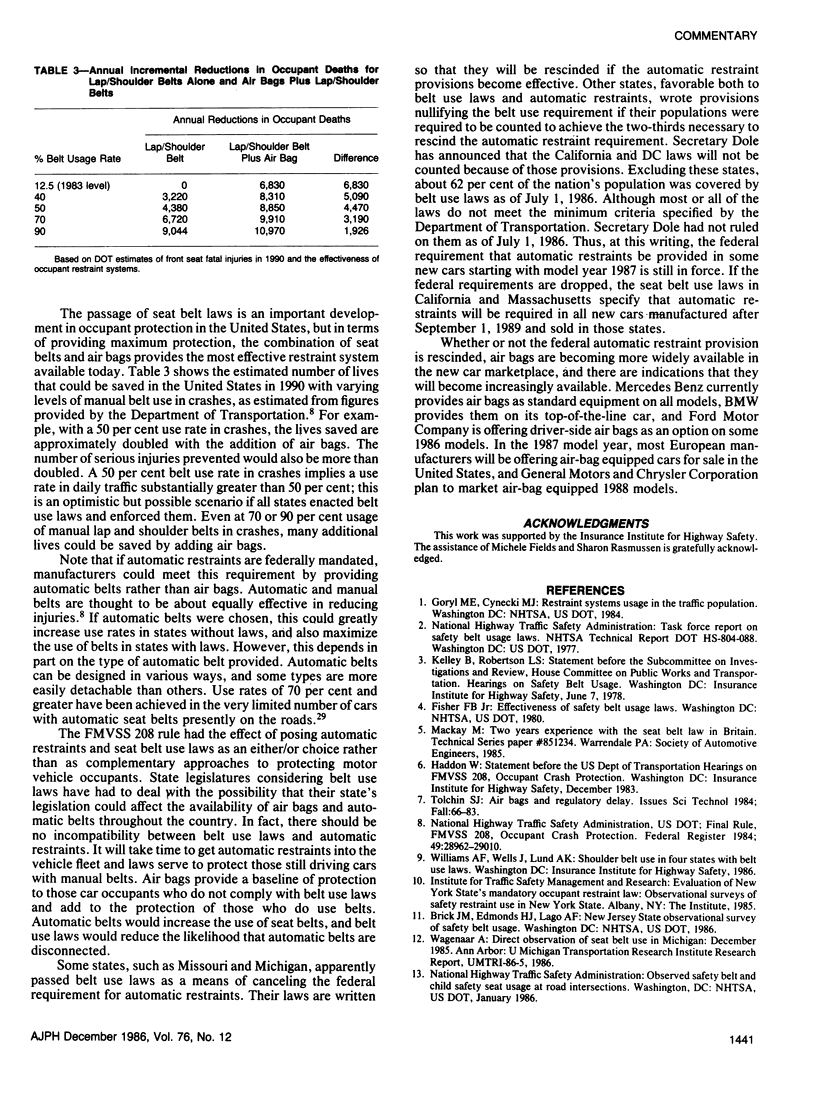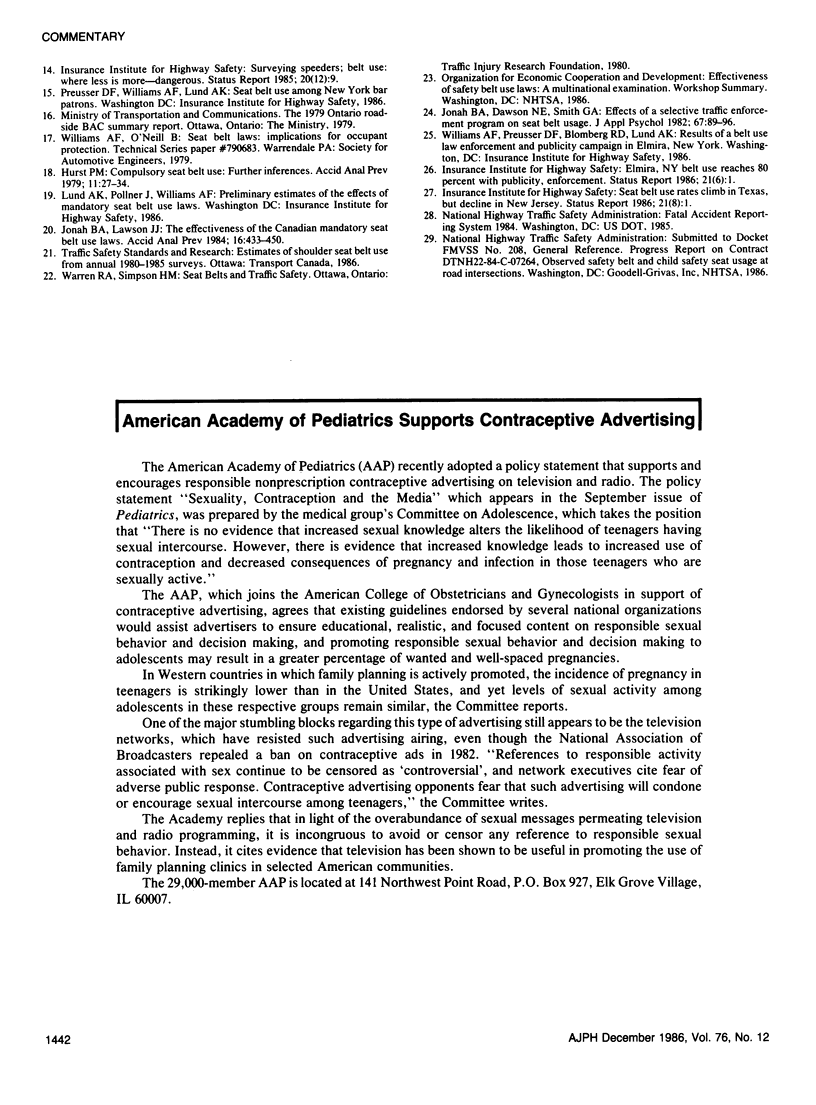Abstract
Current federal rule-making requires restraints such as air bags or automatic seat belts in new cars starting with model year 1987 unless states with two-thirds of the United States population enact seat belt use laws meeting certain criteria. Belt use laws have been enacted by 26 states and the District of Columbia as of July 1, 1986. The first laws to go into effect increased use from less than 20 per cent to 50-70 per cent in the first month; in most cases rates subsequently dropped to below 50 per cent. Texas has been an exception to this trend because it has had much tougher enforcement of its seat belt law than other states. This pattern is similar to the experience of Canadian provinces that passed laws in the mid-1970s; enforcement/publicity programs in Canada have produced belt use rates that are currently greater than 60 per cent. An enforcement program in Elmira, New York also increased use rates sharply. New York, which had the first and one of the strongest and most successful laws so far, had an estimated fatality reduction of 9 per cent during the first nine months of the law. It is likely that a 10 per cent reduction in fatalities is the maximum that can be expected from belt use laws without special enforcement efforts. Provision of automatic restraints in combination with belt use laws would greatly increase crash protection.
Full text
PDF